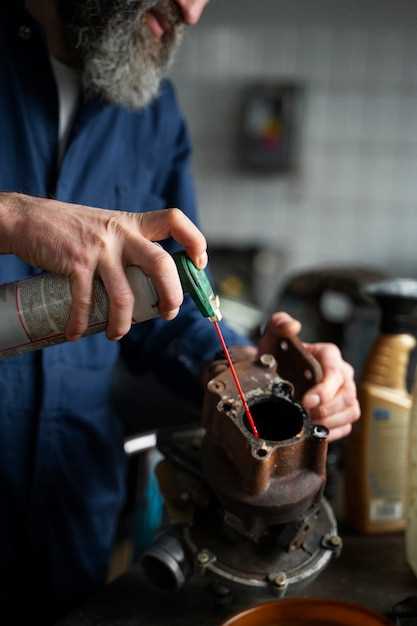
Exhaust leaks in your vehicle can lead to various issues, from decreased fuel efficiency to harmful emissions. Repairing these leaks is crucial not only for maintaining your car’s performance but also for ensuring your safety and the safety of those around you. Understanding how to identify and address these leaks will make you a more responsible vehicle owner.
Exhaust systems are designed to channel combustion gases safely away from the engine and out of the vehicle. However, over time, components such as gaskets, pipes, and mufflers can wear out or get damaged. This can create cracks or holes, leading to disruptive noise, reduced power, and even potential health hazards due to the infiltration of toxic fumes into the cabin.
In this article, we will delve into effective methods for detecting exhaust leaks and provide step-by-step guidance on how to repair them. Whether you’re a seasoned mechanic or a novice DIY enthusiast, this information will empower you to handle exhaust issues confidently and effectively.
Identifying Symptoms of Exhaust Leaks in Your Car

Exhaust leaks can lead to various performance issues in your vehicle, making it essential to identify the symptoms early. One of the most noticeable signs of an exhaust leak is an increase in engine noise. You may hear a loud rumbling or hissing sound, particularly during acceleration, which differs from the typical hum of your exhaust system.
Another common symptom is a decrease in fuel efficiency. If you notice that you’re filling up more often than usual, an exhaust leak might be allowing exhaust gases to escape, which can disrupt the engine’s air-fuel ratio and lead to suboptimal combustion.
The presence of a strong odor is also a clear indicator of an exhaust leak. If you detect a smell of fuel or exhaust fumes inside the cabin, it suggests that harmful gases are seeping into the vehicle, posing a risk to your health and safety.
Additionally, keep an eye out for any warning lights on your dashboard. An exhaust leak can trigger the check engine light due to the change in emissions readings. If you see this light, it’s advisable to investigate further.
Finally, physical inspection can reveal signs of exhaust leaks. Look for rust, cracks, or holes in the exhaust system, especially around joints and welds. If you find any visible damage, it’s crucial to address the issue promptly.
Step-by-Step Guide to Locating Exhaust Leaks

Identifying exhaust leaks is essential for maintaining your vehicle’s performance and efficiency. Follow this step-by-step guide to effectively locate any leaks in your exhaust system.
Step 1: Gather Your Tools
Before you start, ensure you have the necessary tools: a flashlight, jack and jack stands, a wrench set, and a spray bottle filled with soapy water.
Step 2: Prepare Your Vehicle
Park your vehicle on a flat surface and engage the parking brake. Allow the exhaust system to cool down completely before starting your inspection to avoid burns.
Step 3: Perform a Visual Inspection
Begin your examination by visually inspecting the exhaust pipes, muffler, and connectors for signs of damage, rust, or holes. Pay close attention to welded joints and gaskets, as these areas are particularly prone to leaks.
Step 4: Listen for Unusual Noises
Start the engine and listen carefully for any hissing or popping sounds, which may indicate the presence of an exhaust leak. Changes in the sound of the engine can also help you pinpoint problematic areas.
Step 5: Use Soapy Water
Spray the soapy water mixture along the exhaust components while the engine is running. If bubbles form, it indicates a leak. This method is effective for detecting small cracks and pinholes in the exhaust system.
Step 6: Check Exhaust Hangers
Inspect the rubber hangers that support the exhaust system. If these hangers are damaged or broken, they can cause misalignments and create gaps that may lead to leaks.
Step 7: Seek Professional Help
If you are unable to locate the leak after following these steps, consider taking your vehicle to a professional mechanic. They can perform a more thorough examination and carry out necessary repairs.
By systematically following these steps, you can efficiently locate and address exhaust leaks, ensuring optimal performance for your vehicle.
Techniques and Materials for Repairing Exhaust Leaks
Repairing exhaust leaks is essential for maintaining vehicle performance and ensuring safety. There are several techniques and materials available for effective repair. Understanding these options can help you choose the best method for your specific situation.
1. Exhaust Sealant: This is a high-temperature silicone-based material designed specifically for exhaust systems. It can be applied to small leaks or cracks. It is resistant to extreme heat and once cured, it forms a durable seal that can withstand the vibrations typically found in exhaust systems.
2. Exhaust Bandage: An exhaust bandage or cloth is a quick fix for leaks. Made from heat-resistant fiberglass or similar materials, it can wrap around the damaged area. When heated, it expands and hardens, creating a temporary seal until a more permanent solution can be applied.
3. Muffler Clamp: For joints or loose connections, a muffler clamp can be used to secure the parts tightly together. This technique works best for minor leaks and can be a quick solution for exhaust issues.
4. Weld Repair: For more severe leaks, welding may be necessary. This method requires specialized tools and skills, as it involves melting the metal of the exhaust system and adding a filler material. It creates a strong, permanent bond, ideal for repairing cracks and holes in pipes or the muffler.
5. Replacement Parts: In cases of extensive damage, replacing the affected section of the exhaust system may be the most effective solution. This is particularly true for rusted or corroded components that could lead to further issues if not addressed promptly.
6. Exhaust Tape: Similar to bandages but usually made of metal, exhaust tape can provide a temporary seal for pinhole leaks or small fractures. It is important to ensure the surface is clean and dry before application for maximum adhesion.
Selecting the right technique and material depends on the extent of the damage. Always prioritize safety and consult a professional if unsure about the best approach to repair your exhaust system effectively.
